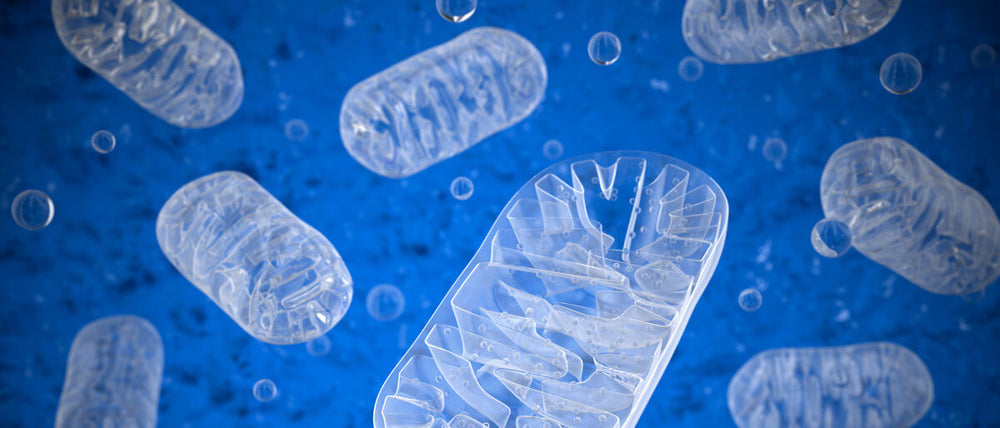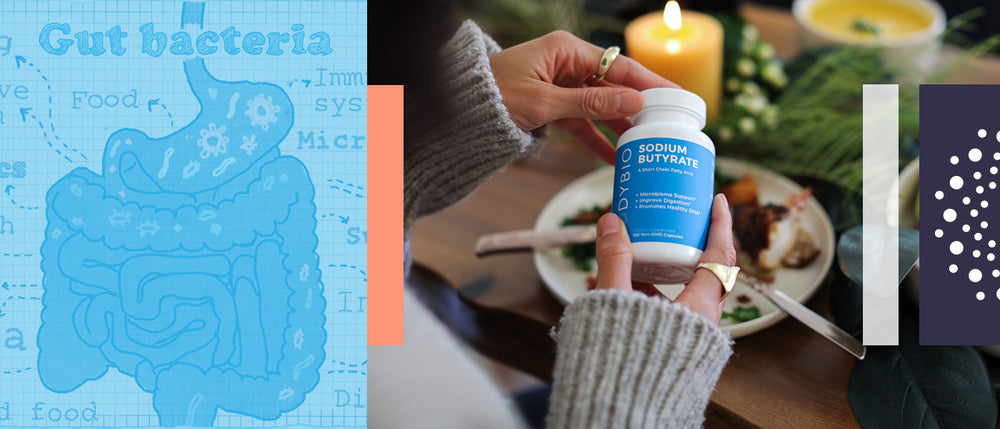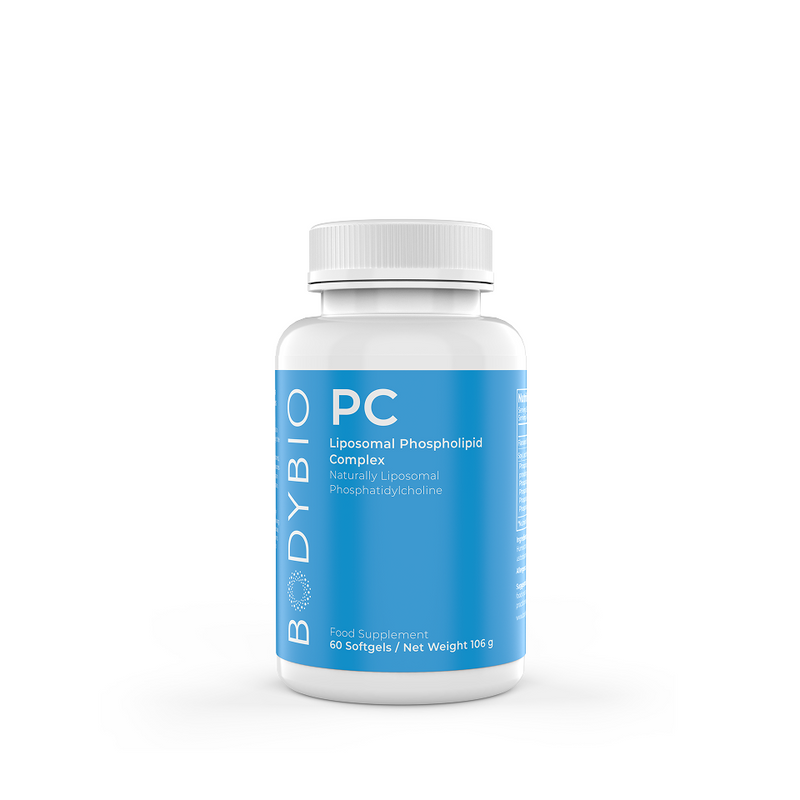Mold Uncovered: How to Protect Yourself From Mold in Your Food and Home
Are you suffering from symptoms such as brain fog, fatigue, or asthma, and are struggling to find relief? Maybe your health has been steadily declining but no one has been able to help you with a diagnosis? If this sounds like a story you can relate to, it is time to seriously assess your environment for mold. Exposure to mold can induce a syndrome called Chronic Inflammatory Response Syndrome (CIRS). Helping the public become aware of this critical illness is so important to reducing unnecessary suffering.
It’s estimated that one in eight deaths in North America are a result of air pollution. It’s also estimated that 50% of homes have some degree of water damage that impacts indoor air quality. Mold biotoxins and inflammatory particles in the air you breathe must be taken very seriously. Mold is quite literally an invisible toxin because often we are unable to see visible mold. Even when mold is not visible, it is constantly reproducing, producing tiny toxic spores that are invisible to the naked eye.
Mold also produces secondary mycotoxins that get inside the body and wreak havoc on our health, meanwhile they go undetected by our immune system because they are extremely small, fat-soluble molecules that are capable of entering our beautiful cells without passing through the bloodstream. As these toxins accumulate in the body and continue to go undetected by the immune system, chronic illness and suffering may ensue.
CIRS is generally associated with water-damaged buildings but can emerge without water.
Below is a list of biotoxins to be aware of:
- Fungi with Mycotoxins
- Bacteria with secondary endotoxins
- Actinomycetes
- Mycobacteria
- Beta Glucans
- Hemolsysins
- Microbial Volatile Organic Compounds (VOCs)
- Cell wall fragments
- Protozoa
- VOCs from building materials
Certain fungi, like mushrooms or yeast, are a delightful addition to your plate. Mold, on the other hand, is not. While it’s true that yeast, mushrooms, and mold thrive in a moist environment, molds damage the material on which they live, impair structural integrity and wreak havoc on our health. Plus, mold doesn’t just grow in our homes, but also in our food. While there are health implications of consuming mold, fortunately, there are some great ways to protect yourself from this sneaky intruder as well.
Mold in Your Home
Molds are produced by spores, which can be carried by air currents because they are tiny and lightweight. Fungi are necessary to the food chain as decomposers, but when molds develop inside your house, they can cause a myriad of problems.
For significant mold growth to happen, there needs to be a source of dampness, a source of food, and a substrate capable of sustaining growth. Building supplies, including carpets, plywood, sheetrock, and other porous materials, are ideal places for molds to live and grow.
Cellulose thermal insulators are made from recycled paper and are one of mold’s favorite materials. A single incident of water damage can encourage mold to live inside a wall, later to be resurrected from near dormancy by high humidity. Therefore, identifying the source of moisture is an essential step in resolution. Even the steam from a stovetop or the shower, the watering of houseplants, or the use of a central humidifier can exacerbate—or even initiate—a mold problem.
Mold can hide under carpets, behind damp drywall, or on your shower curtain. Indoor mold is ugly, smelly, and known to cause infections, allergies, and even sick building syndrome (as seen in office spaces with mold exposure). So important is the control of indoor mold that a classification system exists for it. Class A molds require immediate attention and are deemed highly hazardous to health and should not exist in places habituated by humans. Class B includes those that may incite allergic reactions if encountered over a long period. Class C fungi are not known to be a health hazard but maybe an economic or cosmetic burden. Their strains number in the hundreds.
Types of Mold Typically Found in Homes + Their Health Effects
The most harmful molds found in homes fall into these categories: Chaetomium, Penicillium, Fusarium, Aspergillus, and Stachybotrys.
- Chaetomium is common in homes with water damage and thrives hidden in walls and under carpets. Symptoms of chaetomium exposure can range from water eyes to trouble breathing, to autoimmune diseases (1).
- Penicillium mold can be especially dangerous as it requires low moisture and can spread quickly, including from soil and building materials. If it becomes widespread in a home, Penicillium can cause bronchitis and other respiratory problems.
- Fusarium is most commonly found in plant debris and soil and in rare instances, can lead to severe eye infections (1).
- Aspergillus is all around us in the air we breathe but can cause allergic reactions and lung problems in people with compromised immune systems (1).
- Last, but certainly not least, Stachybotrys, aka black mold is one of the most dangerous and can lead to flu-like symptoms, memory loss, and respiratory damage, especially severe in children (1).
How to Combat and Remove Mold From Your Home
As the saying goes, the best offense is a good defense. The best place to start is by Dehumidifying your home to decrease moisture. Additionally, it’s essential to dry wet areas immediately and ensure that your home has proper ventilation.
Simple steps to remedy a small occurrence include ample sunshine to create dry conditions, improved ventilation, additional insulation in the walls, and dehumidification. But these do not get rid of what’s already present, but only make it non-viable.
One important thing to remember is that merely killing mold is not enough. It has to be fully removed because the chemicals and proteins that evoke a reaction are still present in dead mold. Using bleach will only make it lighter in color and fail to kill the roots. Why? Because bleach is mostly water, which is what mold needs to thrive. The active ingredient in store-bought bleach — often sodium hypochlorite — is weakened. A stronger product than what we get from a store is dangerous. Further, bleach will only work on non-porous surfaces, like tubs and tiles. It does not penetrate porous materials, even concrete, so it can’t get to the roots, causing the mold to return.
What Solutions Do Work to Kill Mold?
There are a few ways to remove mold from your home entirely. First, Borax and straight white vinegar are safe and strong enough to kill mold but take time to work. Next, a more expensive, but still very effective option, is tea tree oil. Tea tree oil is both antifungal and antibacterial, and in turn, is one of the best mold slayers. Use a teaspoon per cup of water in a spray bottle. Further, any residue left on a surface will prevent the recurrence of mold.
A novel product in the fight against mold is grapefruit seed extract, commonly used to fight bacterial, yeast, and viral infections. The citric acid seems to be the active component. Ten drops of this go into a cup of water in a spray bottle. It’ll kill the mold down to its roots.
If a mold problem is severe, get a professional to take a look and offer guidance on next steps.
Mold in Our Food
Mold was first described in the mid-1800s by Czech physician and mycologist August Carl Joseph Corda. Corda named mold as the culprit behind livestock decimation in Eastern Europe, where the animals were dying of blood and nervous system disorders. Stachybotrys (black mold) was discovered to be the culprit, due to its growth in wet hay and animal feed.
Since then, molds associated with the food supply are implicated in conditions including liver disease, kidney cancer, neural tube defects, and hormone-sensitive cancers. Ingestible mycotoxins produced by mold have been found in many food products with the highest levels in boxed cereals and processed grains.
Common Food Mold to Watch Out For
You may be surprised to find out which of your favorite foods may be infected with molds, here are some of the most common:
-
Ochratoxin A (OTA) has the worst reputation, having been found in more than half of breakfast cereals sampled in one study (Nguyen, 2014). Stricter than the FDA, the European Commission allows only 3ng /gram of OTA in cereals and cereal-based products, a regulation not yet practiced in the U.S.
The tested cereals in the U.S. were contaminated with as much as 7.43 nanograms of OTA per gram. Nuts, dried fruits, and infant foods may also be infected with OTA. For cereals, the contamination, in descending order, was highest in oats (84%), followed by wheat (56%), rice (44%), and lastly corn (14%). It is possible, though, that cereal accouterments, such as honey, chocolate, and dried fruits could have embellished the levels. - Fumonisin is a common contaminant of most corn and corn products, along with grains, these fungi pose health hazards on humans and animals who consume them. The toxins are linked with several health issues including cancer of the esophagus, suppression of the immune systems, neural-tube defects, and other ailments (3).
- Deoxynivalenol (DON) frequently infects corn, wheat, oats, barley, rice, and other grains in fields or during storage. DON has been detected in buckwheat, popcorn, sorghum, triticale, flour, bread, noodles, beer, and even infant foods (4). Health effects of DON may include nausea, vomiting, abdominal pain, headache, dizziness, fever, and possibly even reproductive problems.
- Zearalenone is a nonsteroidal estrogenic mycotoxin produced by several species of Fusarium fungi. These fungi tend to grow on grains being stored in high moisture. Health effects of Zearalenone can include major effects on female reproduction by creating hyperestrogenism leading to infertility, libido, and potentially stillbirth (5).
- Aflatoxins are widely spread in nature and have severely contaminated food supplies of humans and animals, resulting in many health problems and even death. These fungi usually infect cereal crops including wheat, walnut, corn, cotton, and tree nuts (Jelinek et al., 1989; Severns et al., 2003), but are especially prevalent in peanuts. Aflatoxins specifically target the liver and can lead to toxicity of the liver in rare cases, and more commonly reduce the efficiency of immunization in children, and immune suppression in adults, leading to a greater risk of infections (6).

Foods to Avoid When Dealing with Mold Toxicity
Mycotoxins are natural contaminants in foods of biological origin and are toxic secondary metabolites of fungi. Despite efforts to control fungal contamination, toxigenic fungi are ubiquitous in nature and occur regularly in worldwide food supplies due to mold infestation of susceptible agricultural products, especially cereal grains. Corn, products made from it, and animals that consume it may all be sources contaminated with fumonisin B1, which on contact breaks apart phospholipid phosphatidylcholine (PC) in the surfactant in the lungs, mucus membranes and the gut mucosa. As a result, corn in all forms should be avoided - chips, tortillas, polenta, popcorn, flour, cereal, grits, fermented corn.
Many companies today know the effects of mold toxicity and test their products for mold as well as pesticides like glyphosate. Check with the specific brand to see if they can provide evidence of mold testing.
Foods to avoid, especially when dealing with mold toxicity, include:
- Oatmeal- a soft grain often contaminated with ochratoxin A.
- Mushrooms
- Cereals and grains: corn, wheat, oat, barley, rye, all grains
- Wine, champagne, beer
- Coffee: use organic only, buy whole beans and keep frozen before grinding fresh
- Tea: even organic is often contaminated with mold. Pique Tea is a company that we recommend for high-quality, mold-free teas.
- Fermented soya as tempeh
- Kombucha
- Cheese: eat only feta (imported, in water) or fresh mozzarella (in water)
- Sprouts
- Herbs and herbal formulas as supplements, unless tested for mold
- Peanuts
- Corn -fed meat and poultry, industrialized meat products
- Dried fruit, fruit juices, cider
- Collagen, gummy bears, gelatin – can be made from the moldy hides of animals
- Nuts
How Does Mold Impact the Body?
Mycotoxins are unwittingly inhaled and ingested, wreaking havoc with the protective mucus layers that line body channels from the mouth to the colon, decimating the surfactants that lubricate and reduce surface tension in the lungs and compromising the stability of the colon’s shield against infection and inflammation. The ochratoxins in oats and the fumonisins in corn can readily undermine this safeguard, more than 70% of which is composed of phosphatidylcholine (PC).
How to Protect Yourself From Food Mold
While removing mold from the home is a matter of using common elements like hydrogen peroxide, bleach, tea tree oil, and borax, removal from foods is much more difficult. . Therefore, we rely on farmers to harvest their crops when the time is right and store them in dry conditions. We also rely on food makers to decontaminate grains prior to, or during, processing and refining.
When mold and its mycotoxins make their way into our food, the best we can do is build up our immune system. One way to keep potential damage from mycotoxin exposure at bay is by incorporating a butyrate supplement, such as BodyBio Butyrate, into your routine. This short-chain fatty acid is produced by the bacterial fermentation (Bacillus subtillus) of resistant starch, something you’re unlikely to consume enough of organically in order to reap its benefits (Zhao, 2014). Sodium butyrate, particularly, has shown strong inhibition of fungi in a dose-dependent manner, resulting in a significant reduction of filamentous mycotoxin strains.
Perhaps equally important is the simultaneous impediment of biofilm formation and the enhancement of macrophage discouragement of mycotoxin manufacture (7). For all its celebrity, butyrate, regardless of its specific type is known to inhibit the growth of tumors, to promote healthy bacteria in the gut and respiratory system, and generally aid in digestion.*
Additionally, mycotoxins alter phospholipid integrity, leaving cell membranes structurally, and functionally vulnerable to damage. Some fungi reduce phosphatidylcholine (PC) content of the membrane by as much as half, thereby reducing lung surfactant (8), debasing gastric and other mucus, and allowing lipid degradation. These enemies of the cell stiffen a membrane that is naturally flexible, resilient, and permeable. Restoration of the membrane to its original glory demands attention and the administration of nutrients that can satisfy the need. Here, a PC supplement, such as BodyBio PC, restores the fabric of the cell membrane, rectifies the disorganization of hepatic tissue (9), and its subsequent disease state, and affords the methylation required for the regulation of gene expression. Phosphatidylcholine has the capacity to clear toxins from nuclear and mitochondrial genes, thereby improving gene expression and enhancing the operation of all organs and body systems*.
BodyBio Balance Oil influences the free passage of energy into the cell and waste material out and guarantees high octane membrane activity. It isn’t only the mold on your walls or the spores that dwell in the air that we have to worry about. Those fungi that defile the food supply are equally contemptible, though less apparent. For optimal health of the cell, its membrane, and cytoplasmic occupants, we can depend on BodyBio PC, BodyBio Balance Oil and BodyBio Butyrate or its relatives.

https://www.indoordoctor.com/blog/hidden-risks-penicillium-mold-indoor-environmen/
https://www.sciencedirect.com/topics/pharmacology-toxicology-and-pharmaceutical-science/zearalenone
Nguyen, L. N., L. C. L. Lopes, et al. (2011). "Sodium butyrate inhibits pathogenic yeast growth and enhances the functions of macrophages." Journal of Antimicrobial Chemotherapy 66(11): 2573-2580.
Hastings C, Rand T, Bergen HT, Thliveris JA, Shaw AR, Lombaert GA, Mantsch HH, Giles BL, Dakshinamurti S, Scott JE. Stachybotrys chartarum alters surfactant-related phospholipid synthesis and CTP:cholinephosphate cytidylyltransferase activity in isolated fetal rat type II cells. Toxicol Sci. 2005 Mar;84(1):186-94.
Burger HM, Abel S, Snijman PW, Swanevelder S, Gelderblom WC. Altered lipid parameters in hepatic subcellular membrane fractions induced by fumonisin B1. Lipids. 2007 Apr;42(3):249-61.
Additional Resources:
http://blackmold.awardspace.com/kill-remove-mold.html
Hardin BD, Kelman BJ, Saxon A. Adverse human health effects associated with molds in the indoor environment. J Occup Environ Med. 2003 May;45(5):470-8.
Koburger T, Below H, Dornquast T, Kramer A. Decontamination of room air and adjoining wall surfaces by nebulizing hydrogen peroxide. GMS Krankenhhyg Interdiszip. 2011;6(1):Doc09.
Kuhn DM, Ghannoum MA. Indoor mold, toxigenic fungi, and Stachybotrys chartarum: infectious disease perspective. Clin Microbiol Rev. 2003 Jan;16(1):144-72.
Mudarri D, Fisk WJ. Public health and economic impact of dampness and mold. Indoor Air. 2007 Jun;17(3):226-35.
Robbins CA, Swenson LJ, Nealley ML, Gots RE, Kelman BJ Health effects of mycotoxins in indoor air: a critical review. Appl Occup Environ Hyg. 2000 Oct;15(10):773-84.
Rockwell W. Prompt remediation of water intrusion corrects the resultant mold contamination in a home. Allergy Asthma Proc. 2005 Jul-Aug;26(4):316-8.
Terr AI. Are indoor molds causing a new disease? J Allergy Clin Immunol. 2004 Feb;113(2):221-6.
U.S. Environmental Protection Agency “A Brief Guide to Mold. Moisture, and Your Home” www.eps.gov/mold/whattowear.html
Baudrimont I, Betbeder AM, Creppy EE. Reduction of the ochratoxin A-induced cytotoxicity in Vero cells by aspartame. Arch Toxicol. 1997;71(5):290-8.
Baudrimont I, Sostaric B, Yenot C, Betbeder AM, Dano-Djedje S, Sanni A, Steyn PS, Creppy EE.
Aspartame prevents the karyomegaly induced by ochratoxin A in rat kidney. Arch Toxicol. 2001 May;75(3):176-83.
Brekke OL, Stringfellow AC, Peplinski AJ. Aflatoxin inactivation in corn by ammonia gas: laboratory trials.
J Agric Food Chem. 1978 Nov-Dec;26(6):1383-9.
Castells M, Marín S, Sanchis V, Ramos AJ. Fate of mycotoxins in cereals during extrusion cooking: a review. Food Addit Contam. 2005 Feb;22(2):150-7.
Castells M, Ramos AJ, Sanchis V, Marín S. Reduction of fumonisin B1 in extruded corn breakfast cereals with salt, malt and sugar in their formulation. Food Addit Contam Part A Chem Anal Control Expo Risk Assess. 2009 Apr;26(4):512-7.
Creppy EE, Baudrimont I, Betbeder AM. Prevention of nephrotoxicity of ochratoxin A, a food contaminant. Toxicol Lett. 1995 Dec;82-83:869-77.
Creppy EE, Baudrimont I, Anne-Marie.. How aspartame prevents the toxicity of ochratoxin A. J Toxicol Sci. 1998 Jul;23 Suppl 2:165-72.
Hardin BD, Kelman BJ, Saxon A. Adverse human health effects associated with molds in the indoor environment.. J Occup Environ Med. 2003 May;45(5):470-8.
Iqbal SZ, Rabbani T, Asi MR, Jinap S. Assessment of aflatoxins, ochratoxin A and zearalenone in breakfast cereals. Food Chem. 2014 Aug 15;157:257-62.
Koburger T, Below H, Dornquast T, Kramer A. Decontamination of room air and adjoining wall surfaces by nebulizing hydrogen peroxide. GMS Krankenhhyg Interdiszip. 2011;6(1):Doc09.
Kuhn DM, Ghannoum MA. Indoor mold, toxigenic fungi, and Stachybotrys chartarum: infectious disease perspective. Clin Microbiol Rev. 2003 Jan;16(1):144-72.
Lee HJ, Ryu D. Significance of Ochratoxin A in Breakfast Cereals from the United States. J Agric Food Chem. 2015 Nov 4;63(43):9404-9.
Lee HJ, Ryu D. Advances in Mycotoxin Research: Public Health Perspectives. J Food Sci. 2015 Dec;80(12):T2970-83.
Marasas WF, Riley RT, Hendricks KA, Stevens VL, Sadler TW, Gelineau-van Waes J, Missmer SA, et al.
Fumonisins disrupt sphingolipid metabolism, folate transport, and neural tube development in embryo culture and in vivo: a potential risk factor for human neural tube defects among populations consuming fumonisin-contaminated maize. J Nutr. 2004 Apr;134(4):711-6.
Martínez de Villarreal, L., J. Z. V. Pérez, et al. (2002). "Decline of neural tube defects cases after a folic acid campaign in Nuevo Leon, Mexico." Teratology 66(5): 249-256.
Mudarri D, Fisk WJ. Public health and economic impact of dampness and mold. Indoor Air. 2007 Jun;17(3):226-35.
Ringot D, Chango A, Schneider YJ, Larondelle Y. Toxicokinetics and toxicodynamics of ochratoxin A, an update. Chem Biol Interact. 2006 Jan 5;159(1):18-46.
Robinson A, Johnson NM, Strey A, Taylor JF, Marroquin-Cardona A, Mitchell NJ, Afriyie-Gyawu E, et al.
Calcium montmorillonite clay reduces urinary biomarkers of fumonisin B₁ exposure in rats and humans.
Food Addit Contam Part A Chem Anal Control Expo Risk Assess. 2012;29(5):809-18.
Sadler TW, Merrill AH, Stevens VL, Sullards MC, Wang E, Wang P. Prevention of fumonisin B1-induced neural tube defects by folic acid. Teratology. 2002 Oct;66(4):169-76.
Scudamore KA, Guy RC, Kelleher B, MacDonald SJ. Fate of Fusarium mycotoxins in maize flour and grits during extrusion cooking. Food Addit Contam Part A Chem Anal Control Expo Risk Assess. 2008 Nov;25(11):1374-84.
Sherry A. Rogers. Indoor fungi as part of the cause of recalcitrant symptoms of the tight building syndrome. Environment International. 17(4); 1991: 271-275
Soni KB, Lahiri M, Chackradeo P, Bhide SV, Kuttan R. Protective effect of food additives on aflatoxin-induced mutagenicity and hepatocarcinogenicity. Cancer Lett. 1997 May 19;115(2):129-33.
Stevens VL, Tang J. Fumonisin B1-induced sphingolipid depletion inhibits vitamin uptake via the glycosylphosphatidylinositol-anchored folate receptor. J Biol Chem. 1997 Jul 18;272(29):18020-5.
Terr AI. Are indoor molds causing a new disease? J Allergy Clin Immunol. 2004 Feb;113(2):221-6.
Voss KA, Riley RT, Jackson LS, Jablonski JE, Bianchini A, Bullerman LB, Hanna MA, Ryu D. Extrusion cooking with glucose supplementation of fumonisin-contaminated corn grits protects against nephrotoxicity and disrupted sphingolipid metabolism in rats. Mol Nutr Food Res. 2011 Sep;55 Suppl 2:S312-20.
Wang X, Wu Q, Wan D, Liu Q, Chen D, Liu Z, Martínez-Larrañaga MR, Martínez MA, Anadón A, Yuan Z.
Fumonisins: oxidative stress-mediated toxicity and metabolism in vivo and in vitro. Arch Toxicol. 2016 Jan;90(1):81-101. doi: 10.1007/s00204-015-1604-8. Epub 2015 Sep 29.
Zhao Y, Selvaraj JN, Xing F, Zhou L, Wang Y, Song H, Tan X, Sun L, Sangare L, Folly YM, Liu Y.
Antagonistic action of Bacillus subtilis strain SG6 on Fusarium graminearum. PLoS One. 2014 Mar 20;9(3):e92486.





